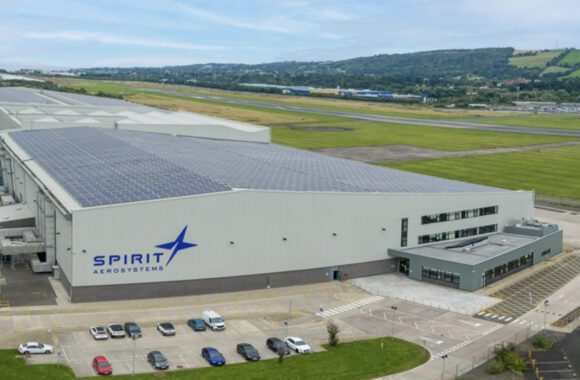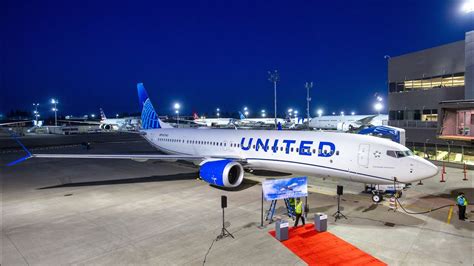The narrow-body market has been flooded with orders, with both Airbus and Boeing holding record backlogs, resulting in only a few delivery positions available through 2020. But in achieving these record high backlogs, the companies have been heavily discounting aircraft, with price reductions greater than 50% off list prices commonplace for large orders. Airbus jumped out to an early lead, launching neo in an attempt to block market entry by CSeries and gain an advantage over 737NG. Boeing, mired in 787 problems, was unable to launch an all new aircraft, and was forced to quickly react with MAX, which was announced during the heat of battle for the American Airlines order, which was split between the manufacturers.
Paris 2011 was the year of the neo, and Farnborough 2012 the year of the MAX, as each gained significant footing in the market. Since then, it has been a battle of discounting, with Airbus taking a higher market share in the re-engined market. But why discount heavily in what is essentially a duopoly environment? Part of the reason has been to preclude future competition, and the strategy appears to be working well.
Three years ago, the prospective glut of competition from Embraer, Bombardier, COMAC and Irkut appeared to spell a significant future market share reduction for Airbus and Boeing in the narrow-body field. Thanks to the aggressive discounting and locking up record backlogs, that threat appears to now be fading somewhat. The programs from COMAC and Irkut appear to be facing significant delays, with only domestic customers. Bombardier’s potential traction with the CSeries has been delayed enough that a potential stretch version that could become a direct competitor at the heart of the market has been delayed. While Bombardier and Embraer will likely take the former A319 and 737-700 market segments, as they did with the similarly less efficient A318 and 737-600 previously, Airbus and Boeing will focus on the more profitable A320/321neo and -8/9 MAX models which provide them higher unit revenues.
We expect Embraer to continue to be successful with its EJet program, and Bombardier to succeed with their CSeries against the A319neo and 737-7MAX. While we do expect China and Russia to eventually succeed with their aircraft, we no longer expect significant exports for either program, which will focus on domestic markets. Even so, the 10 aircraft per month from Bombardier and potentially 10 from Embraer, along with 5 each from COMAC and Irkut will, by 2020, begin to change market dynamics. Their impact on the supply/demand balance will likely result in an oversupply bubble in the narrow-body market.
As of 28 July, Airbus has generated 2,348 firm orders and 846 options for the neo family, while Boeing has generated 1,491 firm orders and 834 options for the MAX family. The market share for the re-engined aircraft is 61.2% for Airbus and 38.8% for Boeing on a firm order basis, and this market share has been holding fairly steady over the last few months. We expect this trend to continue, as from our independent calculations, the aircraft are very close economically, with a very slight edge, and future growth potential, to the PW GTF equipped neo.
In recent days, we’ve heard some interesting statements from Airbus and Boeing regarding the marketplace, focused on the narrow-body space. Airbus indicates that it is not interested in maintaining a market share of more than 60%, despite their belief that they could obtain a two-thirds share in the marketplace. Boeing still indicates that it would like to achieve 50% of the market as its goal. Adding these together, one still gets 110%, which isn’t possible. With the Airbus and Boeing success at killing the market for potential competitors, who were very quiet at Paris, will the price war ease off, or will both continue to cut prices to gain share?
We believe discounting will ease, for several reasons. First is the heavy backlog and relative scarcity of delivery positions. While we believe some positions may be speculative, the current order books are filling up to capacity, eliminating the need to further discount in the near term. Second, the immediate competitive threat from CSeries has not materialized to the degree feared, and the Chinese and Russians appear stalled. As a result, with the competitive threats eliminated to a great degree, duopoly pricing can return. Third, both companies have significant development projects underway in both the narrow-body programs as well as the A350, 787-10, and 777-X wide bodies, and need positive cash flow.
The Bottom Line:
Don’t expect massive discounting of narrow-body aircraft to continue, as Airbus and Boeing are again well positioned competitively, no longer as worried as they once were about potential new competitors, and will soon focus on their more profitable models and cash flow.
Views: 8




Is it possible that the current “price war” is the direct consequence of the A320neo’s premature launch?
I suspect that most of the heavy discounting is done on the A320 Classic. It was obvious to me that the A320 Classic’s value was going to plunge when the A320neo was launched.
There is also a question whether some A320 “firm” orders are in reality not so firm as they should be. Perhaps some A320 Classic orders are cancelled or deferred, like Kingfisher’s.
The so-called price war was the logical consequence of Airbus’ attempt to take advantage of its early start (I do not say “premature start” – it seems to me that the initiative has received strong market support) to try to gain market share, and of Boeing’s efforts to keep its own customers.
I understand the reasons why pricing might be less aggressive in the future, but I am not so sure : sales forces have to sell, even if delivery slots are many years ahead …
I do not see why the price of new A320 CEOs (or “classic” as VV calls them) would plunge more than the price of B737 NGs. On the contrary, with the MAX coming to market approximately two years later than the NEO, Boeing has to sell more of them, and should feel an increasing price pressure. I also do not see why there would be any deferment of any A3XX CEO order. If what the customer wants is to upgrade to the NEO, then it is a conversion, not a deferment. Most recent major orders actually seem to include both CEOs and NEOs, so it seems that customers accept a phased transition to the new generation.
Again, A and B meet the same market conditions, the only difference being that B has to manage a longer transition.
Both airframers’ capacity to execute their plans and their timeline is another issue.
I do not see why the price of new A320 CEOs (or “classic” as VV calls them) would plunge more than the price of B737 NGs. On the contrary, with the MAX coming to market approximately two years later than the NEO, Boeing has to sell more of them, and should feel an increasing price pressure.
As I said previously, it depends much on how firm are “firm” orders. I believe the 65 A320 unfilled orders from Kingfisher is a firm order. I think there are other soft orders in the A320 Classic backlog that must be recycled.
The current sales of A320 CEO (Clunker Engine Option) looks like the recycling of those orders. The big question is still how many A320 CEO orders will actually be delivered to the initial purchaser. Will they be canceled or converted to something else?
I have to laugh that Leahy wants to quit while he is ahead and keep it that way. Big of him to offer Boeing 40%.
In reality market share is delivered aircraft a year, not sales in 2020.
Airbus does something under 42 a month (that pesky two month shutdown) and Boeing is working up to 42+ a month.
If Boeing goes to 47 then they have 53% (even at a face value of Airbus 42 a month) and Aibus does not want to go higher even if they could as they are unsold.
If Boeing keeps the Max temp line going and leverages all the assets then they can go to 60 or more a month and that is 60% for Boeing.
No Boeing is not going to let Airbus steal customers so as long as that is going on Boeing will discount.
The one uncertainty is the P&W GTF and how fast it gains efficiency over the CFM (and does P&W stay happy with staying even and making more money on the engine or go competative and gain share?). The GTF is much easier to improve than the CFM and can CFM keep up. Interesting
On the deliveries front, AirInsight should do an analysis of the backlog of manufactured but undelivered 787’s. According to figures at All Things 787, not a single airframe between line numbers 10 and 20 have been delivered, though they came off the assembly line over 2 years ago, and there is over 6 months of production sitting in inventory waiting to be brought up to a deliverable condition. There has been almost no progress getting these older units out the door. Obviously the earlier units needed to be brought up to spec, but that happens with all new models. The fact that there has been virtually no progress in clearing this backlog is remarkable, yet I haven’t seen any reporting on it.
What you call “price war” is sound competition. Boeing makes solid profits, so the price they get paid obviously is okay. Airbus struggles because of much more inefficient structures (e.g. multiple FAL compared to one). Plus they are obviously trading earnings for market share. That is what companies in other industries do every day. Perhaps the real prices are not deflated, but the list prices are inflated and don’t reflect the realities of the industry.
Boeing’s response to this question – “We have a detailed delivery plan for all of our 787s and are on track to that plan. We do not share that plan publicly.”